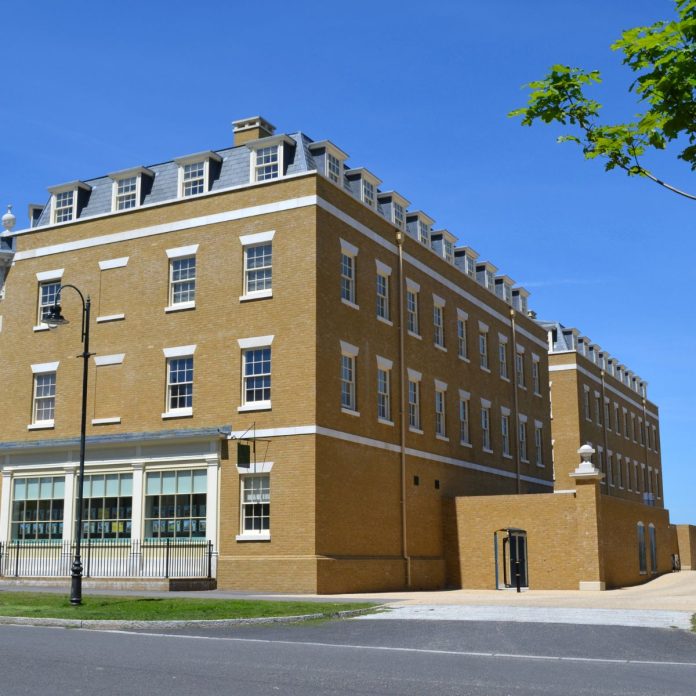NPPF reforms emphasise “beauty” and “gentle density” in development – but these vague and unquantifiable terms will only cause more uncertainty in a system already under strain, argues Grant Leggett of Boyer
“Beauty” is a central theme of the NPPF reforms, published in December 2022, but so too is density – or more specifically, “gentle density”.
The notes which accompany the new NPPF state that the government will deliver “enough of the right homes in the right places with the right infrastructure, ensuring the environment is protected and giving local people a greater say on where and where not to place new, beautiful development…specifically, this includes changes to…promote more beautiful homes, including through gentle density”.
The reforms to the NPPF were in large part a response to a rebellious group of anti-development backbench Tory MPs, who threatened to torpedo the progress of the Levelling Up & Regeneration Bill. And so some big-ticket changes (such as removing mandatory housing targets and tightening up on green belt development) were made.
On this basis, many practitioners are already questioning whether the rather vague and unquantifiable concepts of “beauty” and “gentle density” were thrown in as a means of stalling proposed new developments for political purposes.
For stall them they will: they are terms open to such subjective interpretation that they will tie decision-makers in knots even more than they already are.
The NPPF reforms identify mansard windows as “well designed” and states that considering them harmful to the character of neighbourhoods is “wrong”. It seems making value judgements about specific architectural features is a step too far for planning policy.
After all, it is commonly accepted that whether any architectural feature is “right” or “beautiful” depends upon the context.

The NPPF reforms overlook the potential of good land use
My own view is that good design is closely linked to good land use. In most situations, and especially in urban areas, density has many advantages. It helps create a mixed and balanced community, increases the potential for a range of facilities in close proximity, is economically advantageous (allowing resources to be spent on services and amenities) and can facilitate a greater variety of uses, such as live/work and co-living.
Denser schemes also have the potential to be more sustainable, not least in terms of sustainable transport, if located close to public transport or within easy reach of local services. Developable land, especially in cities, is a scarce resource and it is essential that potential development capacity is not wasted.
High density and high buildings are not necessarily synonymous. That said, the more airspace is utilised, the more land remains available at ground level as an amenity.
Policies that create an obligation for developers to provide high-quality open spaces include the London Plan’s
Urban Greening Factor (UGF). This guidance requires every local authority to create its own greening strategy and all major developments to include urban greening as a fundamental element of site and building design. It introduces the UGF calculator a means of evaluating the quantity and quality of urban greening in a development proposal.
One man’s concept of beauty is another’s eyesore
Beauty and density are dependent on context, but the similarities end there. In fact, context is one of the many features which demonstrates why the two cannot be considered synonymous. Poundbury, the Duchy of Cornwall’s experimental pastiche development on the outskirts of Dorchester, exemplifies this.
At Poundbury, Georgian architecture predominates. Georgian architecture may represent the very best in design to some; to others, the repurposing of a centuries-old style is regarded as defeatist, retrograde, even “Disneyesque”.
Similarly, Georgian architecture divides opinion on density grounds. To me as a Londoner, homes of just three storeys, with generous gardens both front and back represent low density. To a resident of a 1970s bungalow on a generous suburban plot, it would represent high density.
Perhaps schemes such as Poundbury will be effective not only in encouraging NIMBYs to accept development but also to encourage them to accept higher density. But this only works in those areas where the average density is lower than a typical neo-Georgian development.
Take that approach in London and the perfectly acceptable densities currently achieved will be lost, homes will become increasingly scarce, house prices will skyrocket and local centres will become desolate and unviable.
A national document such as the NPPF has no role in prescribing either beauty or maximum density across all contexts, were it even possible to do so. My preference is to avoid tinkering with policy when the likely outcome is at best uncertain and, at worst, politically motivated.
We have enough uncertainty in planning at present. Constant change will only intensify uncertainty and slow down the much-needed provision of new homes, amenities and infrastructure.
Well designed schemes will hopefully measure up to the NPPF reforms
I would like to think that the changes to the NPPF will have little bearing on my work because, working with my colleagues in Boyer’s design team, we already produce schemes that are well designed and make good use of available land.
But I fear that tenuous terms such as “beauty” and “gentle density”, despite meaning very little in planning terms, have the potential (as has already been seen with the now infamous Berkeley scheme in Kent) to result in major schemes being called in and refused permission, exacerbating our current housing crisis.
Grant Leggett
Executive director
Boyer
Tel: +44 (0)203 268 2018

















